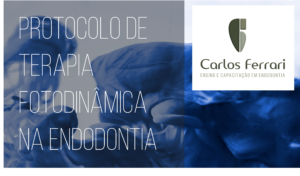Radiology in endodontics - 3rd class. Radiographic interpretation in endodontics.
This third class talks about the theoretical background that the professional must have for a better interpretation of the radiographic image. Know the image overlays with endodontic interest, the endodontic pathologies and the non-endodontic pathologies that can be confused with the former.
Interpretation
The limitations of radiographic examination impose difficulties in the interpretation of radiographs with endodontic purposes. The most important of these is the two-dimensional nature of the radiographic examination, which requires the dental surgeon to pay special attention, especially in posterior upper teeth. Radiographic overlays of endodontic interest Some anatomical structures have radiographic radiolucent images that, depending on their position, may be confused in the interpretation with periapical rarefactions of endodontic origin. In the maxilla, structures that can produce such an effect are the palatine canal and foramen, and the maxillary sinus, which can have their images superimposed, especially in radiographs with a distorted angulation. In the mandible, the anatomical structure that when its image is superimposed on the apexes, causes misinterpretation, is the mandibular canal and more frequently, the mental foramen
Endodontic anatomy.
Radiographic examination reveals the dental anatomy and periodontal and osseous tissues in two dimensions, which requires interpretation for better endodontic treatment planning. The differential observation of enamel and dentin can be easily performed due to the difference in their composition (about 90% and 70% mineralized composition respectively). Regarding the apical region, the apical foramen is rarely found in the anatomic vertex of the apex, and its most common position is laterally to it, and it also has a variable distance between its constriction and the anatomic vertex. In anterior teeth, the image of a root without a discernible root canal may indicate a calcium metamorphosis of the pulp, or pulp mineralization. On the other hand, when there is an image of a root canal only in the middle and apical thirds, it can signify this mineralization process in progress. When a radiolucent image of the root canal has changes in radiopacity, we can interpret a division in the canal. The radiopaque image may actually represent hard tissue between them from that point on.
Non-endodontic pathologies with imaging in the periapical region.
Radiographic interpretation in endodontics, when facing alterations in this region, must be performed with attention and rigor, following defined and objective criteria, therefore it is suggested the observation of the following details of an image: number of lesions, location, radiolucency, border characteristics, internal structures, effects on adjacent structures, and association and effects of the lesion with adjacent teeth. The pathologies and changes of non-endodontic origin most commonly misdiagnosed as endodontic are listed below by radiolucency: Radiopaque: idiopathic osteosclerosis and mandibular torus. Mixed: cemento-osseous dysplasias, odontomas and benign cementoblastoma. Radiolucent: lateral periodontal cyst, dentigerous cyst, keratocyst, traumatic bone cyst and nasopalatine cyst, adenomatoid odontogenic tumor, giant cell lesion, intraosseous fibromas and lipomas, ameloblastoma, malignant tumors and Stafne's bone defect.
Endodontic pathology.
The interpretation of radiographic images for the diagnosis of endodontic pathologies should always be taken into account only after all the previous steps of anamnesis, history and clinical examination have been performed. A thickened radiopaque image of the lamina dura and an increased radiolucent image that represents the periodontal ligament may reveal tooth displacement or inflammatory process of the ligament due to occlusal trauma, pulp and/or periodontal pathology. On the other hand, a decreased or non-existent image, when accompanied by the loss of the lamina dura image, may reveal a process of substitutive resorption, or ankylosis. A diffuse periapical bone rarefaction of small dimensions can be associated with a pulp inflammatory process (irreversible pulp inflammation), either symptomatic or asymptomatic. Among the most difficult conditions to diagnose in endodontics is transverse root fracture. When the direction of the line is vestibulo-lingual, the possibilities of observation are greater, but it is extremely difficult when it occurs in the mesiodistal direction, perpendicular to the x-ray beam. In these cases one can observe evidence of its presence when radiolucent or even radiopaque images are observed in the case of J-shaped treated canals, along the entire length of a root surface up to the apex. Radiology in Endodontics - 3rd class. Interpretation.
https://ferrariendodontia.com.br/tecnica-radiografica-na-endodontia/





